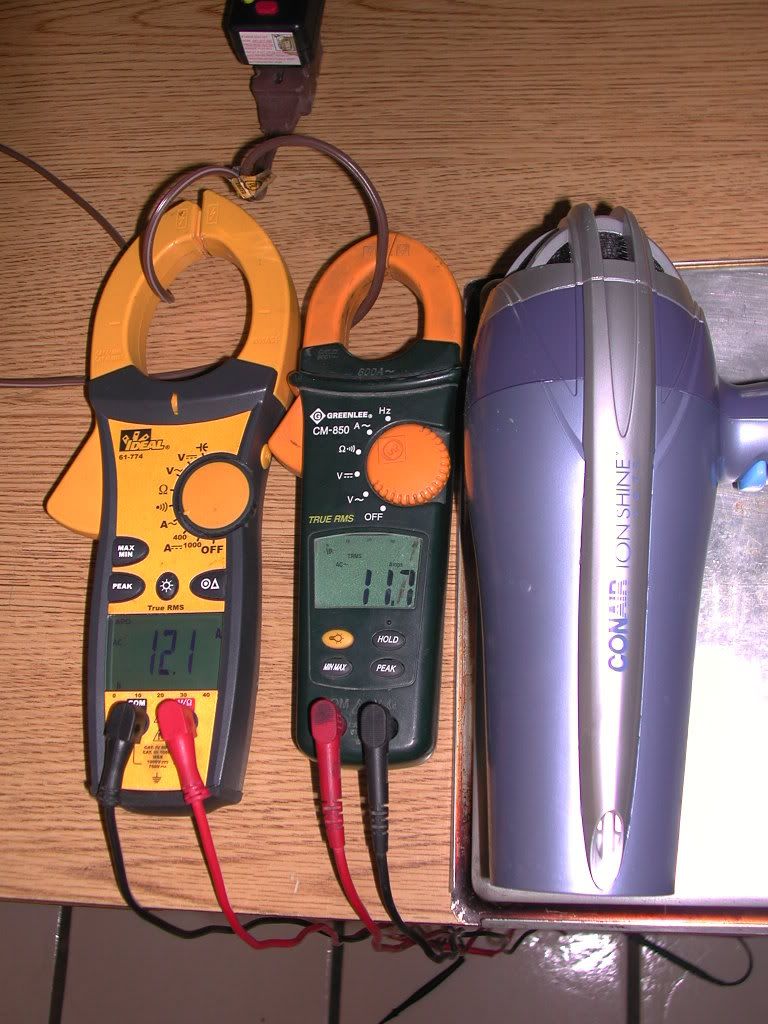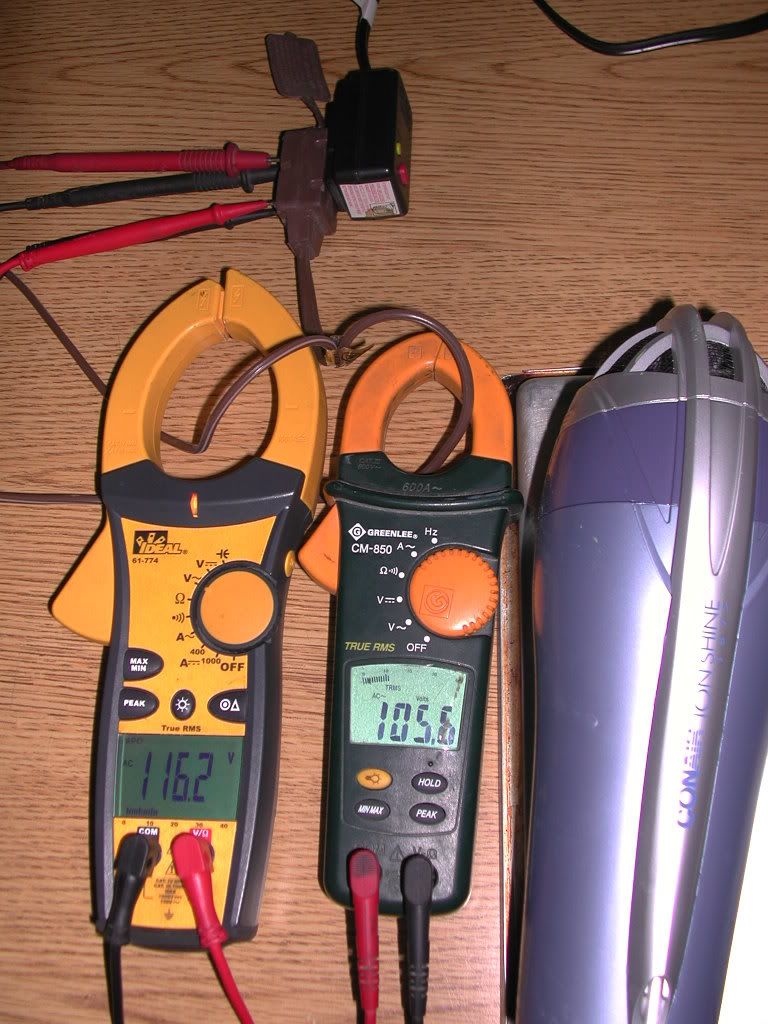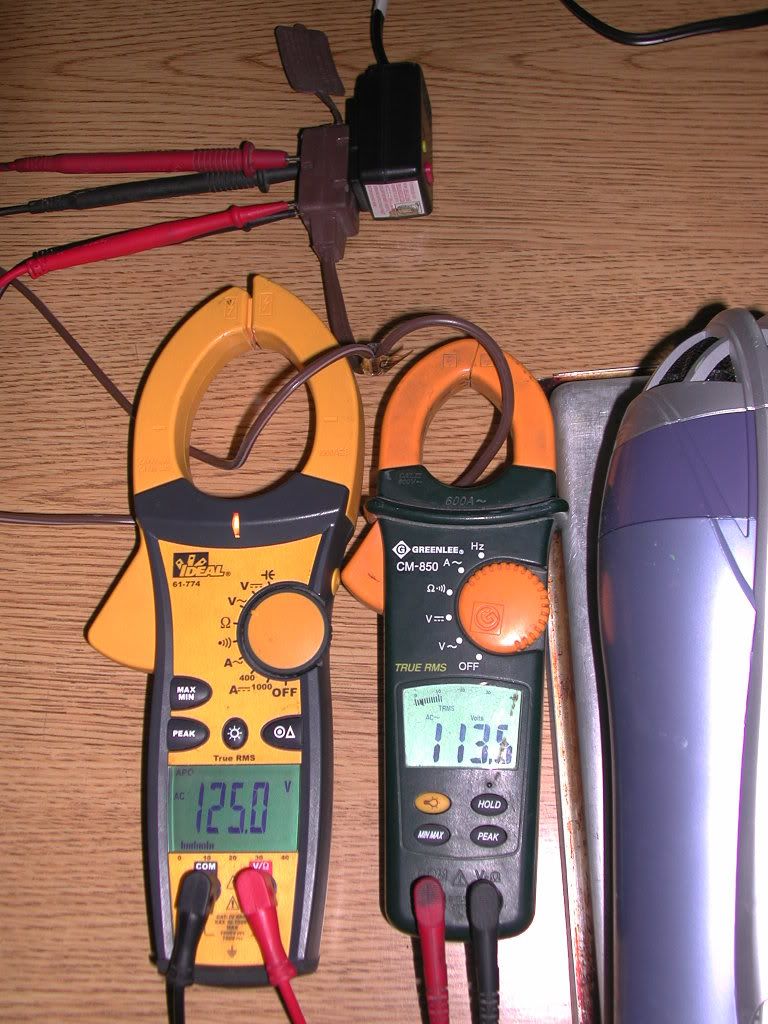zog
Senior Member
- Location
- Charlotte, NC
I'd just spend $2 on one of those DMM's that Harbor Freight has. No need for a fancy shmancy Fluke.
And what is the CAT rating on that?
I'd just spend $2 on one of those DMM's that Harbor Freight has. No need for a fancy shmancy Fluke.
And what is the CAT rating on that?
And what is the CAT rating on that?
Takes a big man to admit he shops at Harbor Freight!:wink:
Being honest, for general electrical troubleshooting, the meter you use for everyday tasks doesn't have to be very accurate, just dependable, and be able to bounce well when dropped. Or cheap, so when it doesn't bounce you just get another $20 meter out of the truck...
I'd just spend $2 on one of those DMM's that Harbor Freight has. No need for a fancy shmancy Fluke.
Both testers are in the same receptacle.
The red and black leads are reversed on the meters so meters are reading inverted signals from each other assuming the same colors are in the same side of the receptacle.
I bought their ampclamp once, it wasn't accurate out of the box. Like, noticeably inaccurate based on common sense, right out of the box. It wasn't worth the $10. I'll shop at Harbor Freight for some things, but cordless drills and meters are no longer on that list.I'd just spend $2 on one of those DMM's that Harbor Freight has. No need for a fancy shmancy Fluke.
Thank you Laszlo, but we have used both testers on the same services seconds apart in the past and the results were within a volt.
090218-1149 EST
The Agilent 1253A list price is $449.
At http://www.transcat.com/Catalog/Pro...TRAPCD=WBGMM&gclid=CKroxIrD5pgCFSHaDAodfgJ5cQ
it is listed at $379.
Newark's price is $449 and 60 days lead time.
These people seem to have a 15% discount currently.
http://www.metrictest.com/catalog/promotion/agilent_hhdmm.jsp
I suspect availability is a problem from any source.
In Google the search string
1253a meter
seemed to be fairly useful.
.



090218-1953 EST
chris:
Your DC measurement on a 9 V battery showed a difference of about 3.1 % (1 - 9.3/9.6 = 0.031 --- Ideal to Greenlee).
Your original values from post 1 were Ideal to Greenlee 124.8 to 113.7 or about 10.7 % difference (124.8/112.7 = 1.107) and a reversal of which was larger when compared to DC.
Now in AC current it is 12.1 to 11.7 or about 3.4 % but opposite the DC voltage relative to the larger one.
Next another pair of AC voltage readings. 116.2 to 105.6 about 10 % difference correlating with your original AC voltage difference.
Because I would not expect two different locations to have low AC supply voltage I am going to guess that Greenlee has the major AC voltage problem.
It is likely that hair driers and heaters consume less power than their rating. Reasons for this might be for advertizing, and to prevent a 6 sigma unit going above the rating.
.

